January 18, 2013
Apricots and Egrets
For nearly two months now, I am treated each morning to the sight of a gathering of great egrets waiting for breakfast. They jostle each other for the best spot along the botanical garden's canal so they can fill their bellies with gizzard shad, a little fish that swims in big crowds. The great egrets are not the only bird with a taste for shad. The great blue heron is also there, but always in solitaire. The cormorants get along with each other better than the egrets do and typically cling together waiting for their opportunity dive in. Hooded mergansers take their share from a floating vantage point. Despite all the potential competition, there seems to be enough shad to go around.
Subscribe to:
Post Comments (Atom)


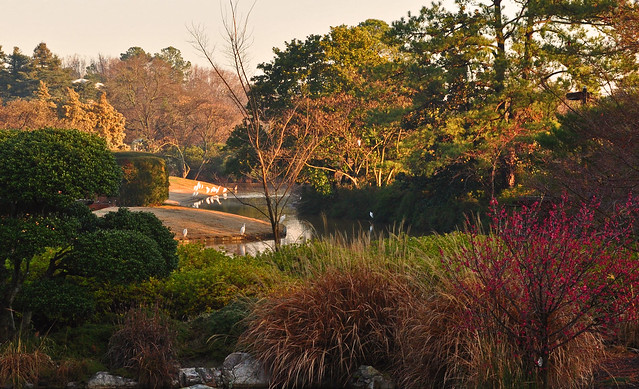
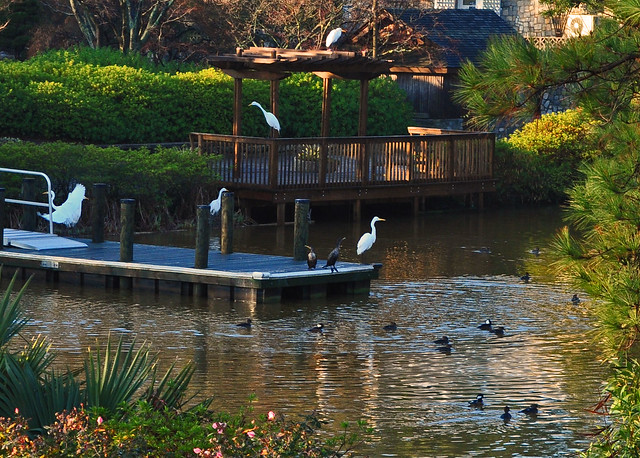
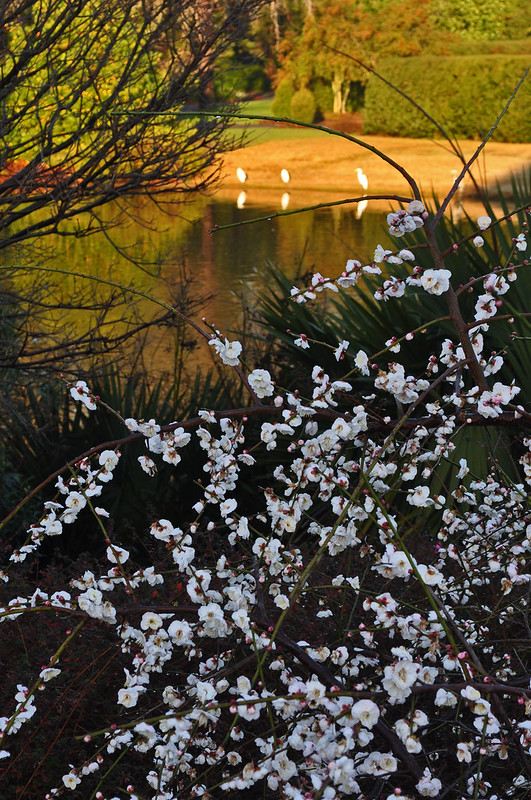
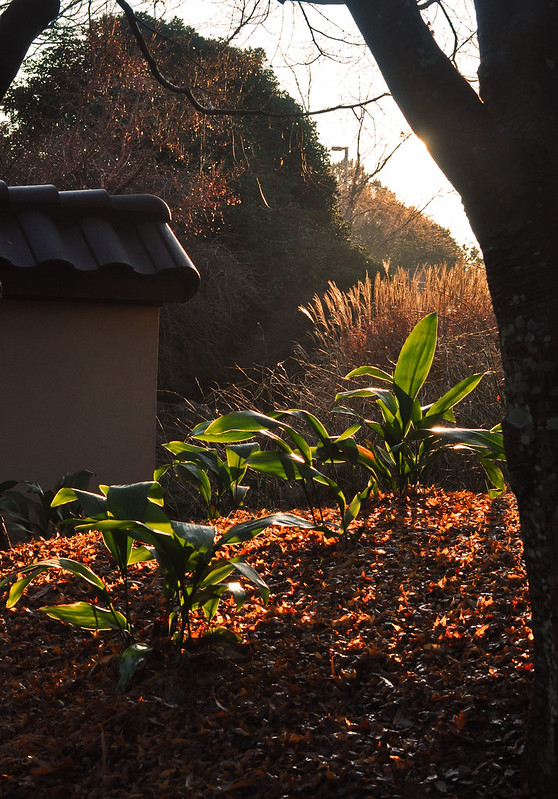
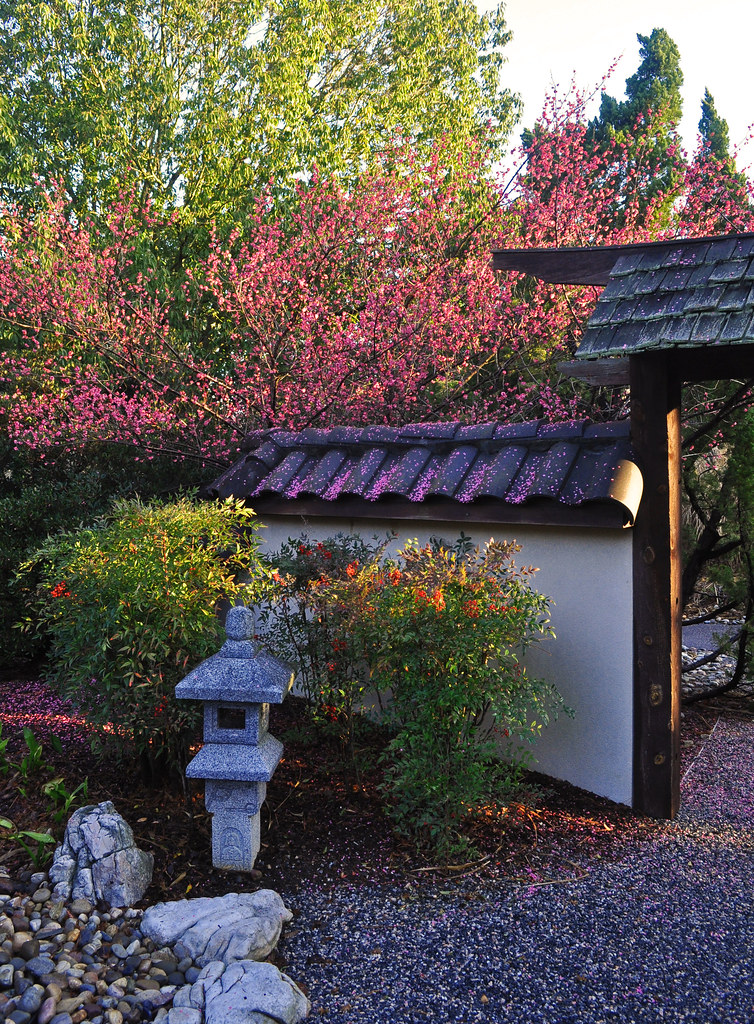
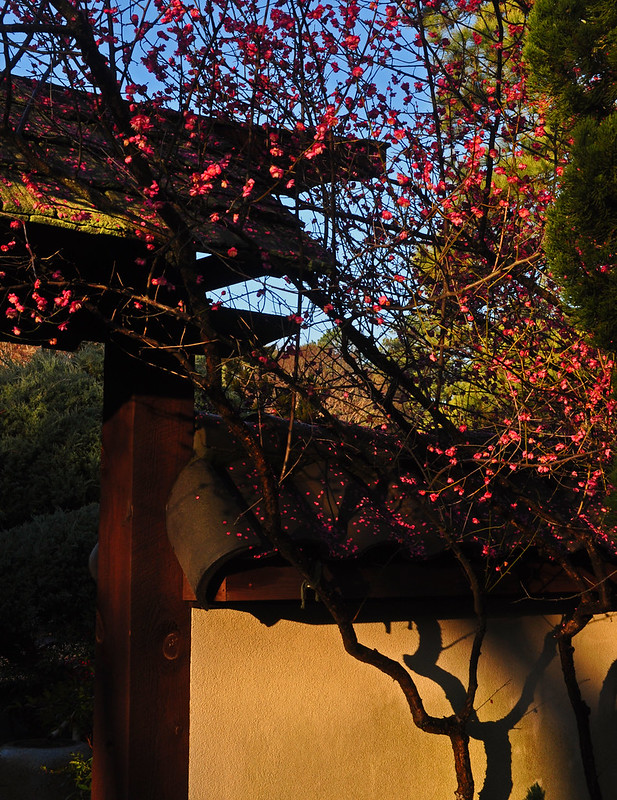
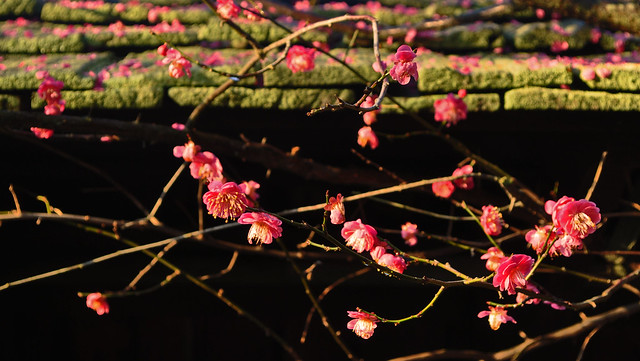
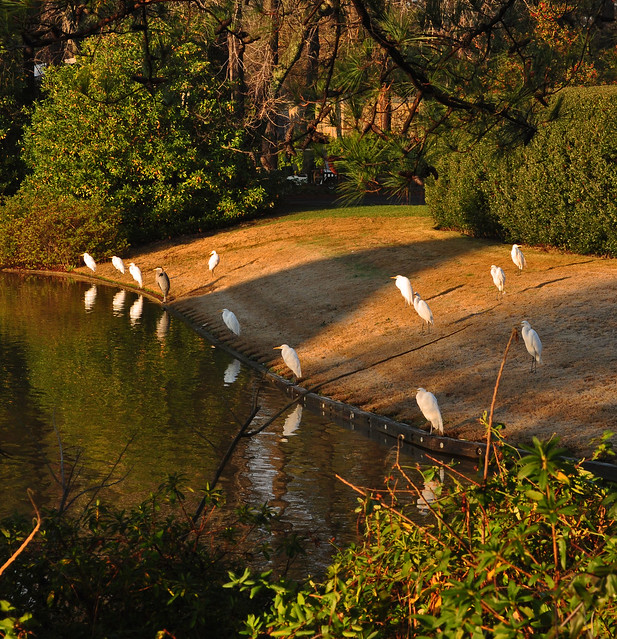




I would have to say that would be a nice greeting each day. Do the shad just run in winter there?
ReplyDeleteA flock of egrets is always a striking picture-- that bright white just pops. Nice to see some of the blooms at the garden.
ReplyDeletewow, what a beautiful landscape to work in. You are so lucky! The pink petals on the roof are just incredible looking. What is the white blossoming bush with the 3 egrets behind it? Or is that a tree?
ReplyDeleteWhat a wonderful daily environment to explore. Just like an English estate. And they pay you for this too — wonderful!
ReplyDeleteWhat a magical sight to see a flock of egrets! I often wonder where the go after summering here in Maine. I love your nature posts best of all. You have a wonderful, poetic eye, Les.
ReplyDeleteWe loved seeing the herons and egrets when we were in South Carolina. And I can't believe you already have trees blooming in January!
ReplyDeleteAre the shad early this year? I remember when I worked in DC and used to walk along the Potomac each day. When the shad ran, the grebes and other diving birds would gather. In my memory that was February and March. Anyway...great pics...c'mon spring!
ReplyDeletePam in CO
Are you a lucky guy! In Virginia, I was lucky to see one or two great egrets a week on the waterfront.
ReplyDeleteThanks for sharing the beauty of Norfolk Botanical Garden, gorgeous in any season.
OMG Les, you've got trees budding. Marry me and take me away from this frozen land ! ;-)
ReplyDeleteI finally made it out into the garden today and I very much enjoyed the sights and sounds. Hearing the birds was a real treat since I've been indoors for so many weeks now.
ReplyDeleteI love watching herons here in the PNW. I grew up on a creek and used to watch them fish and I adored the grace with which they enjoyed their solitude.
What an amazing place to work. Love those prunus trees, and the light glowing through the aspidistra leaves. Though given that in the UK an aspidistra is a house plant, and one typically described as inhabiting a gloomy Victorian hallway filling a Jardiniaire, I also find that shot a tad disconcerting...
ReplyDeleteLes, I'm also curious to know what are the white blossoms in the picture with the 3 Egrets in the back. Its a beautiful picture.
ReplyDeletePlus, you got a marriage proposal! I believe this is a first for this garden blog...LOL!
Beautuful gardens, Egrets are not seen here but blue herons are regular visitors to our garen pond. It's a regular battle with them to save our fish.
ReplyDeleteAlan,
ReplyDeleteThe shad live in Lake Whitehurst year-round, but in the winter they come into the canal, perhaps it is warmer.
Janet,
Egrets are ineed pretty, there song is another matter entirely.
Jen,
That tree is a weeping Japanese flowering apricot called 'Bridal Veil'. It is normal for it to bloom in winter, and it is very sweet smelling.
John,
Yes I do get paid! I must be living right.
Sarah,
They live here all year, but I don't know if there is another group that just spends the winter here.
Jason,
The apricots usually bloom in winter, the rest of the year they are unremarkable.
Pamit,
These shad have no access to the anywhere but this lake. Ages ago it was connected to the Chesapeake Bay, but was dammed to use as a reservoir. I do not know if they were trapped there, or if fish eggs stuck to some birds legs.
Annie,
I have never seen this many in one place, unless it was at a rookery.
Sybil,
I am sorry, but I am already taken. Flattered though I am.
Ann,
I am glad you made it outside. Sometimes that is the remedy for many ills.
Janet,
I did not intend to disconcert you. Aspidistra are very hardy here, and one of the few plants that can take near total shade.
Chavliness,
See my answer to Jen, and then to Sybil.
Sensible,
Yes, there is the whole koi and goldfish eating issue.
Les
Wow, great pictures! I love egrets but haven't seen one since September.
ReplyDeleteWhat a nice start to a workday morning! I agree with John's joking comment: Wow, they pay you to do this! Lucky you! I am sure there must be a number of stresses that go along with your new job as well, but in this post there is only beauty. The photographs are wonderful as always Les.
ReplyDeleteO.K. let me get this straight. They PAY you to be here? I know that there's a lot of work going on but what a spectacular workplace!
ReplyDelete